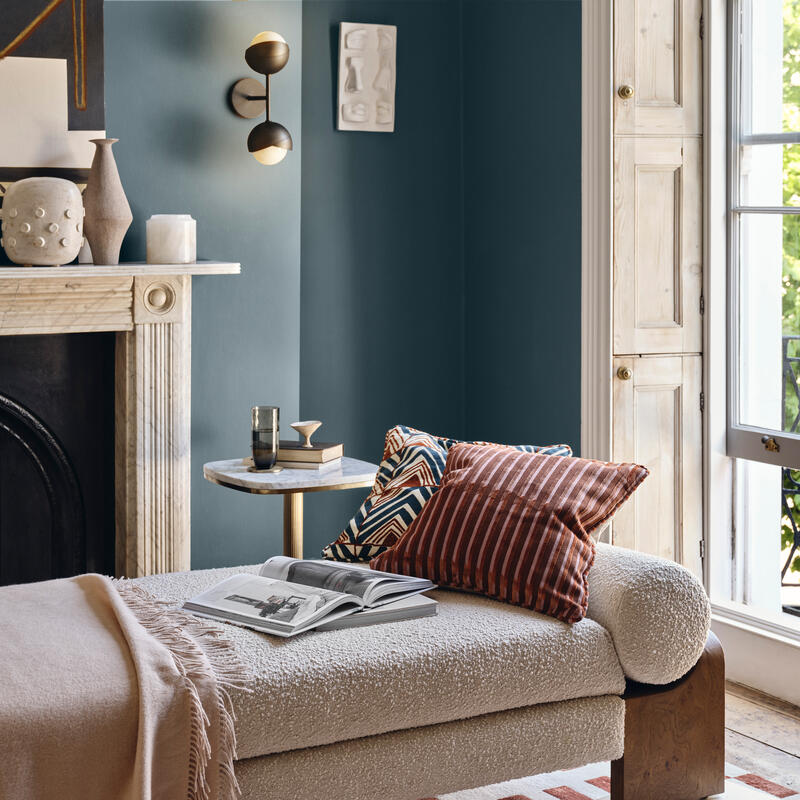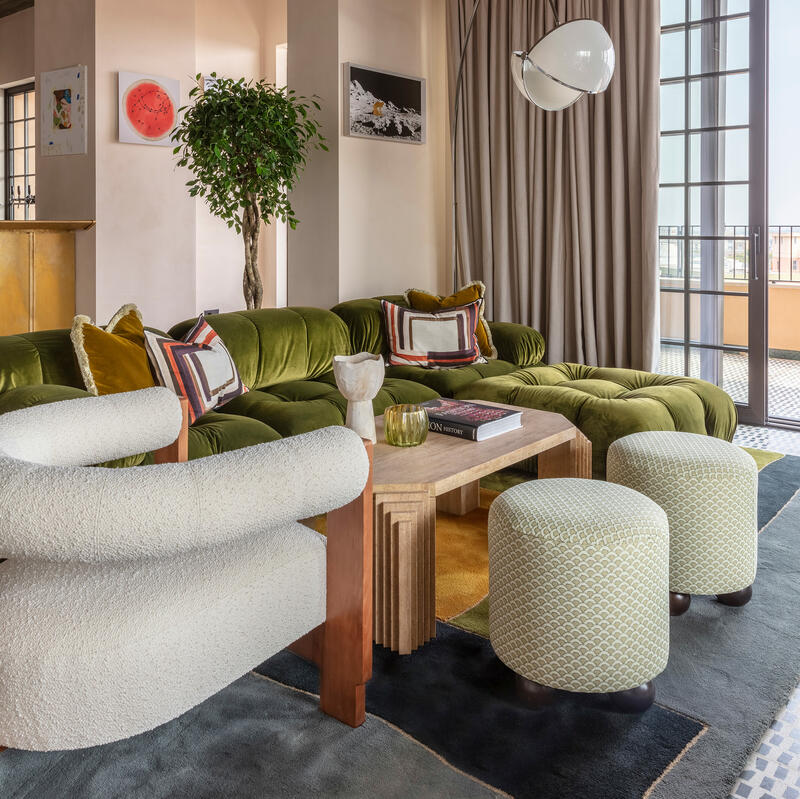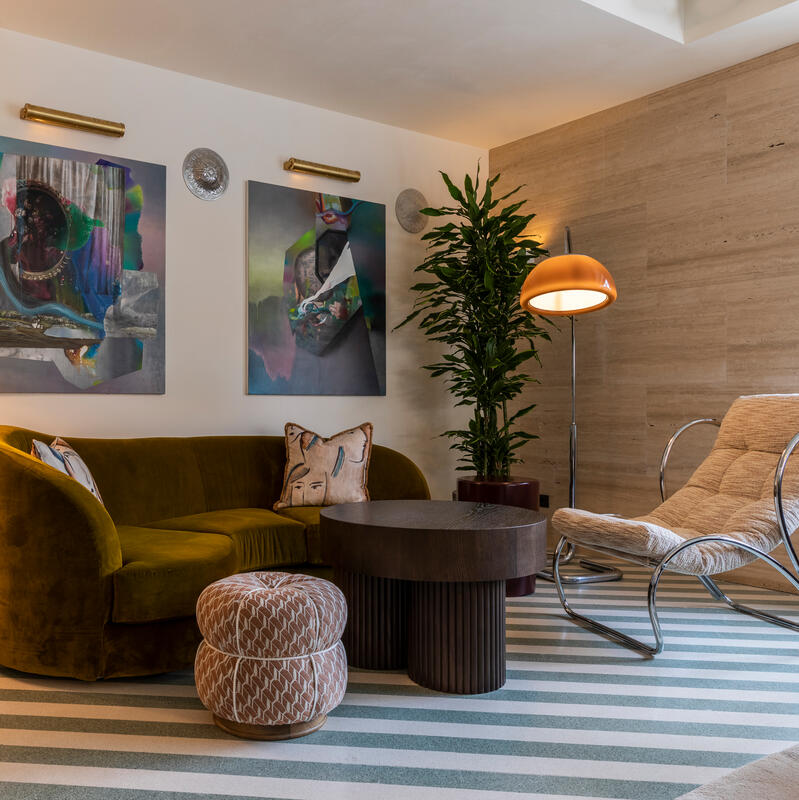When asked to describe Soho House's signature style in one word, Soho Home Interior Style Manager Candy Murray says it has to be 'eclectic'. Our spaces are known for bringing together layers of colour, pattern and texture, combined with moments of contrast to create a sense of depth and interest.
It can be daunting to design a room from scratch, but creating a palette is the key to honing the vision for your home. For every space within our Houses, the team pulls together inspiration sources, colours, fabrics, trimmings, flooring and more to create an over-arching view of the scheme - and you can do the same. Here, Murray shares the building blocks of creating a palette at home.



Respond to the space and gather inspiration sources
To plan the aesthetics of a room, first you must consider which elements are unmovable. If there are architectural features, such as ceiling beams or fireplace tiling, an authentic floor that you'd like to keep, or large pieces of furniture that will stay, think about the tones and style of these aspects and how that might impact anything you bring into the space.
You should also take into account the windows and where they sit, how much natural light the room gets and whether this lends itself to a lighter or darker colour palette. Then, you can start building the inspiration references you're drawn to - and once you've had time to deep dive, look for recurring trends to help shape your overall vision.
Choose a colour palette based on the room’s purpose
With our Soho Home clients, we always ask them to think about how the room will be used before making any big decisions. For example, will the space be used in the evenings for entertaining, is it where you will relax and unwind, or is it a family room for children to play in, too?
Imagine how you want to feel in the space and this will help build the colour palette; softer colours work well for a bedroom or a relaxed lounge, while you can lean into darker hues in a snug, or perhaps something more creative and dynamic for a kitchen. Overall, three to five colours work well in a space, used across a mix of upholstery, accessories and wall paints or papers.


Use accessories to bring in a range of shades and patterns
Once larger furniture pieces have been decided, accessories are the perfect way to build layers when it comes to texture, pattern and colour. Use cushions, lampshades, throws and even accent pieces like a footstool and occasional chair to bring contrast into the space.
For example, play with a velvet footstool next to a boucle sofa, or a mix of patterned cushions across a seating area. The rule is, if the scheme is starting to look too matchy-matchy, throw in a contrasting hue or fabric.


Master the art of mixing patterns
Contrasting patterns can really bring a space to life, so don't be scared of them. We love to bring in prints across rugs, cushions, curtains and lampshades, letting each one co-exist. But, there are some rules that make it a little easier.
Don't put patterns of the same scale next to each other; go for something busy like a ditsy floral next to something large and open such as a big stripe. While contrast is good, sticking with the same colour family ensures a red thread, so pick out a few key shades that appear across the varying patterns. And avoid staying with the same style or era; a home with all 1970s-inspired prints will look novelty, so be aware of drawing inspiration from different time periods.
Rely on vintage to add character
Another way to ensure that your space has depth and character is to pick out a few vintage pieces. Again, you don't want your home to look like a museum, so don't get everything from a mid-century specialist, for example. One-off pieces that no one else has will give it that certain something.
One of the easiest buys for those who are new to vintage is a stand-alone armchair, as it makes a statement but can be moved easily if you change your mind. Or, go for storage like a sideboard or bookcase, because it will always be useful. We wouldn't advise starting with lighting, because it can often be technically tricky.


Create a statement with a feature piece
In our opinion, every room needs a 'wow' piece and this will help you create a moment of contrast to elevate the whole scheme. An impactful way to do this is with an occasional chair, and you'll see these all over the Houses with bold patterns to inject personality into a space. As it's such a singular piece, you can really go wild.
Another idea is to utilise your overhead lighting and choose something that draws the eye up. For example, a mottled glass chandelier in a rose-tinted hue or an extra-low trio of pendants that you'll spot as soon as you step into the room. These features can be a finishing touch, or even what you build your whole design around.
Our design team are here to help you recreate the style and atmosphere of our club settings in your own home. Find out more here and book your consultation.

























